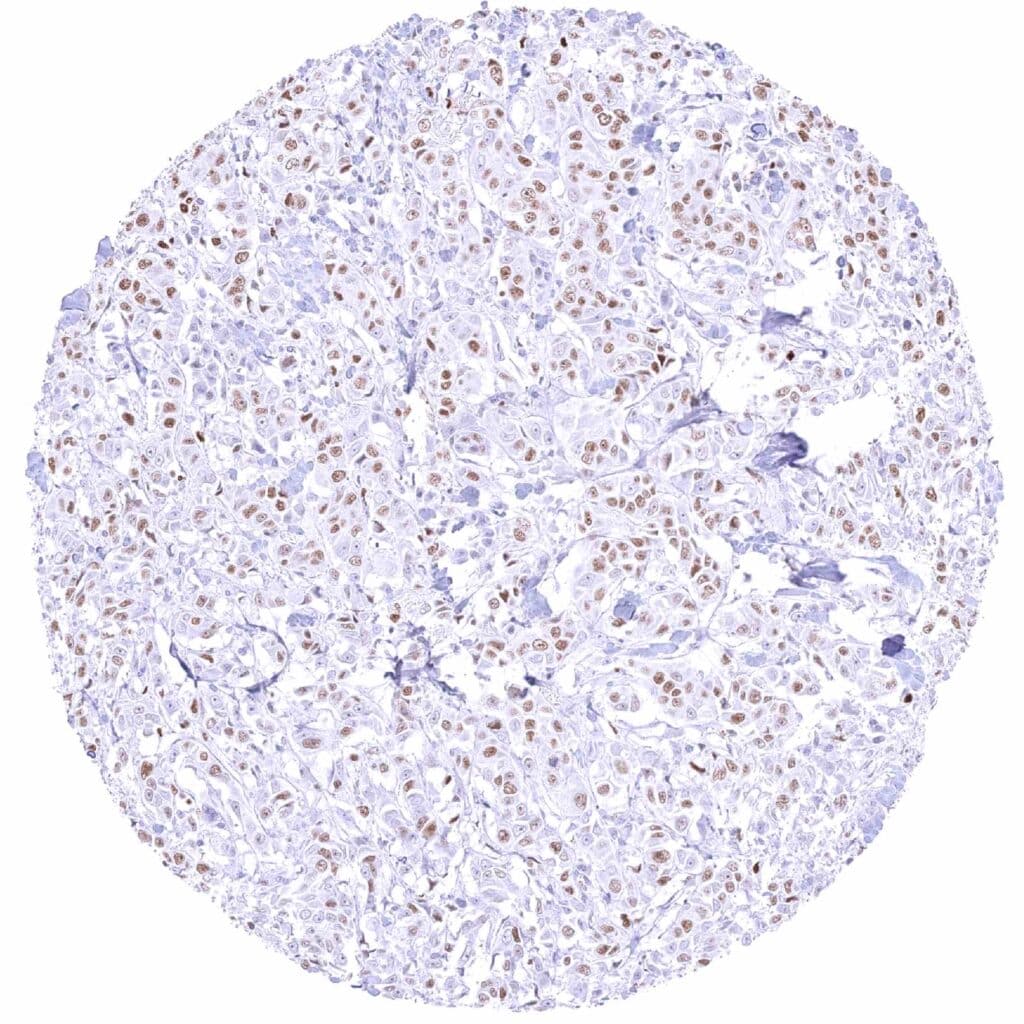
Breast – Invasive breast cancer of no special type (NST) with weak to moderate nuclear MCM5 staining of a large subset of tumor cells.
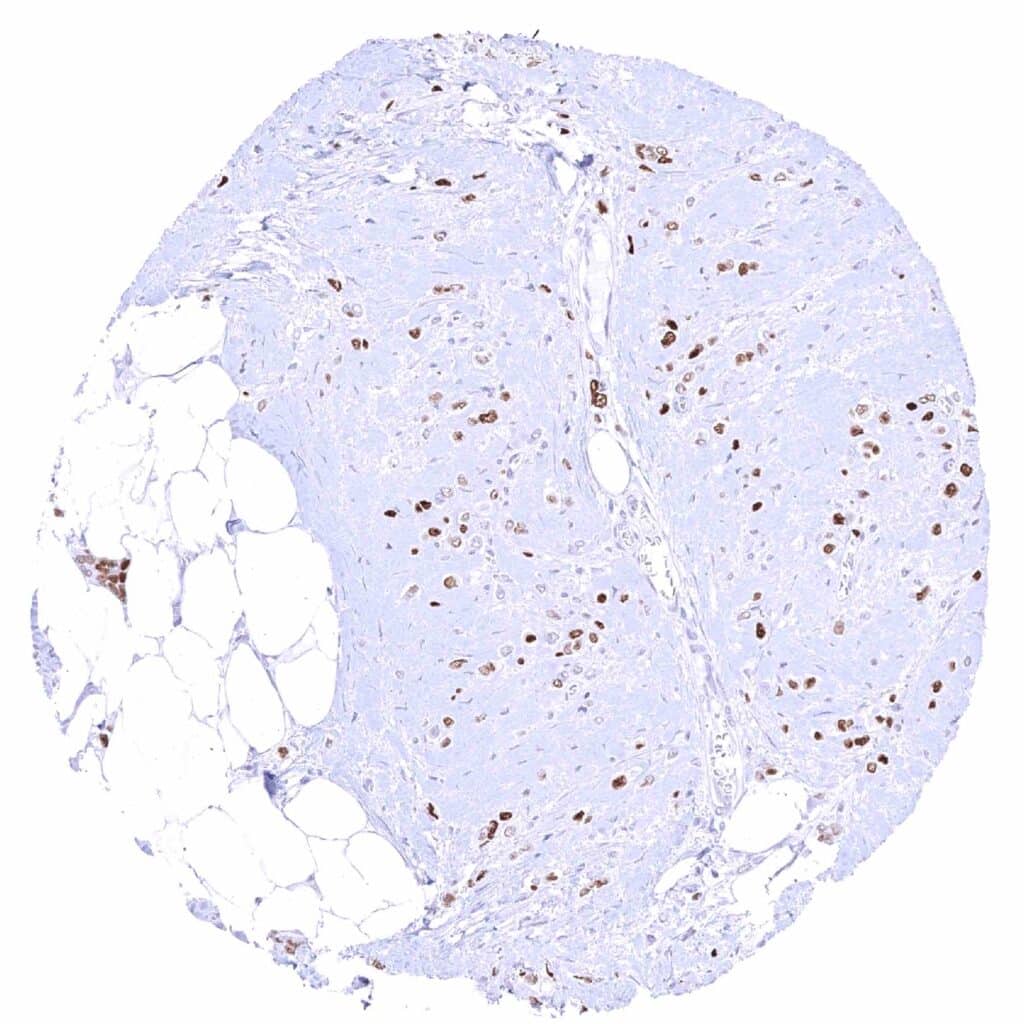
Breast – Invasive lobular breast cancer with moderate to strong nuclear MCM5 positivity of most tumor cells.
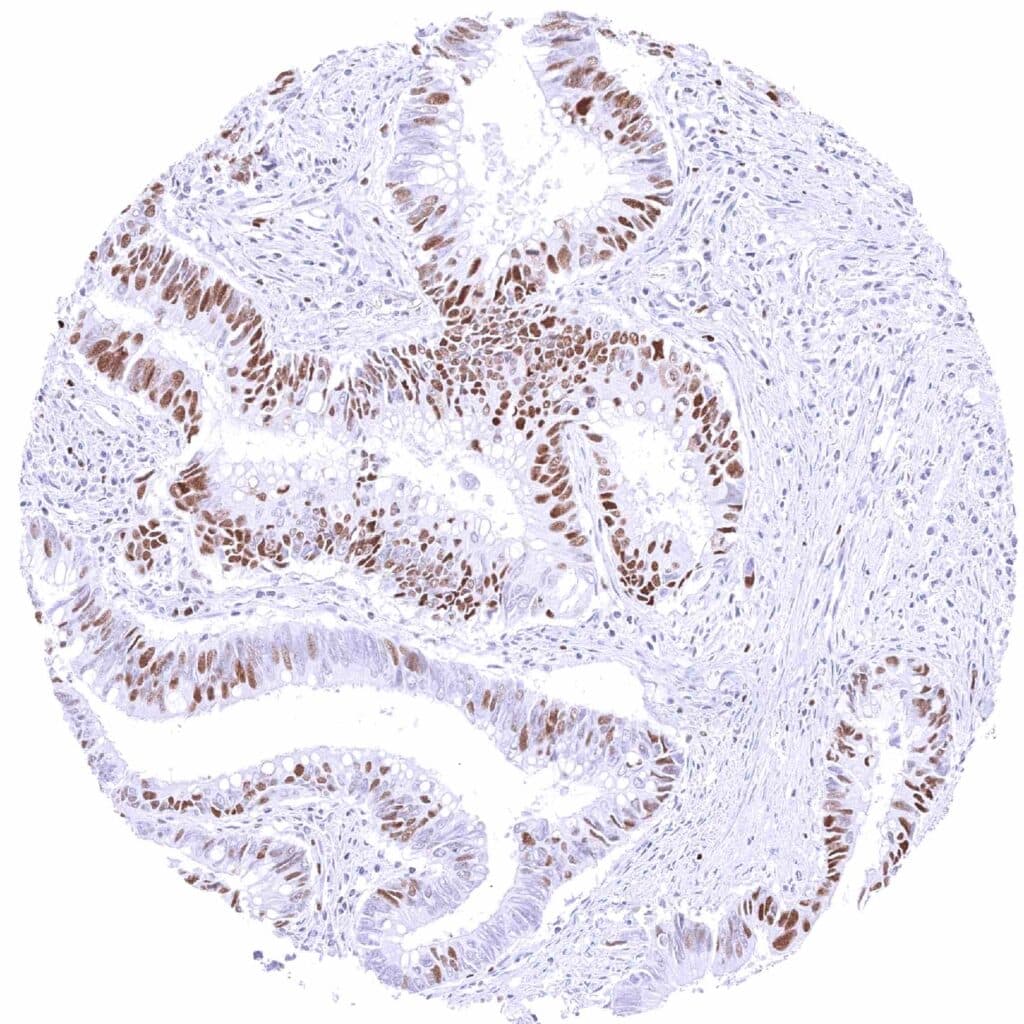
Colon – Colorectal adenocarcinoma with moderate to strong nuclear MCM5 staining of a subset of tumor cells.
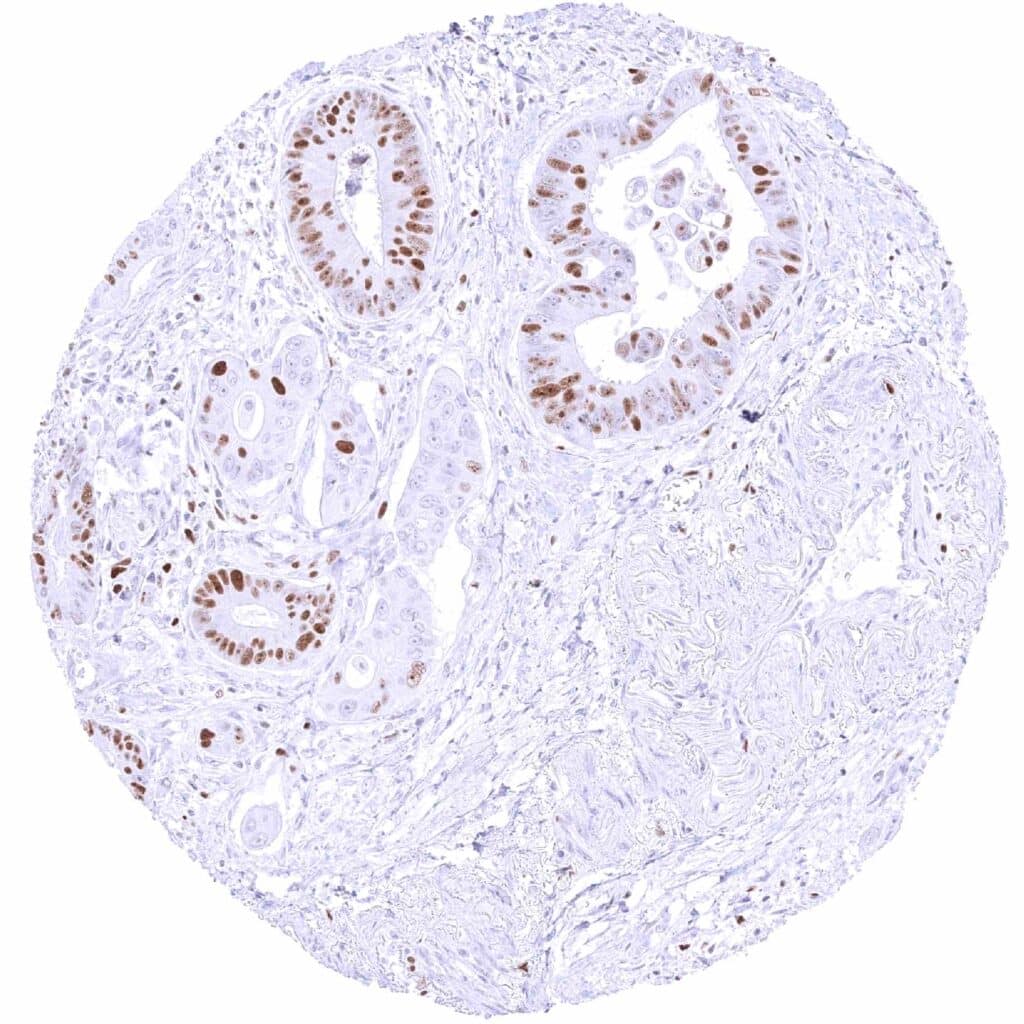
Colon – Colorectal adenocarcinoma with strong MCM5 positivity of a large fraction of tumor cells.
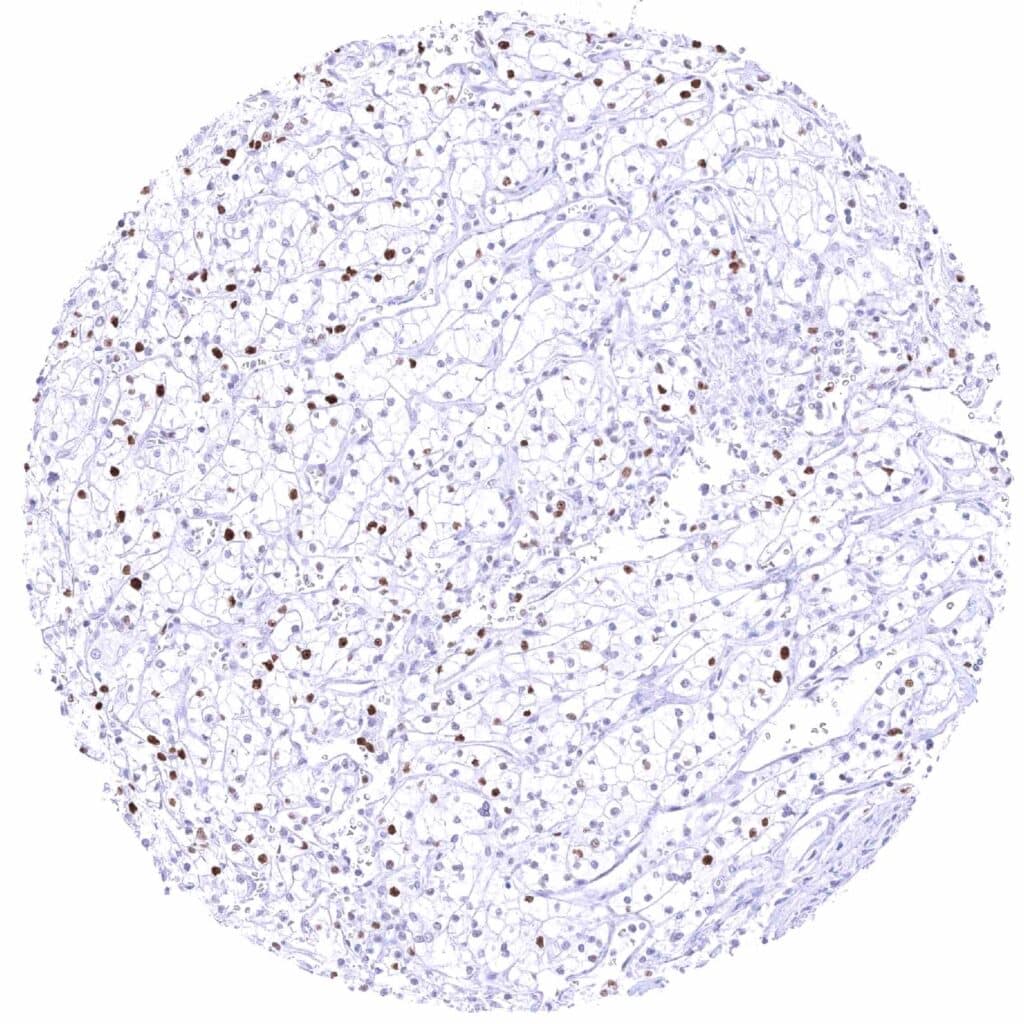
Kidney – Clear cell renal cell carcinoma with MCM5 staining at variable intensity of a significant subset of tumor cells.
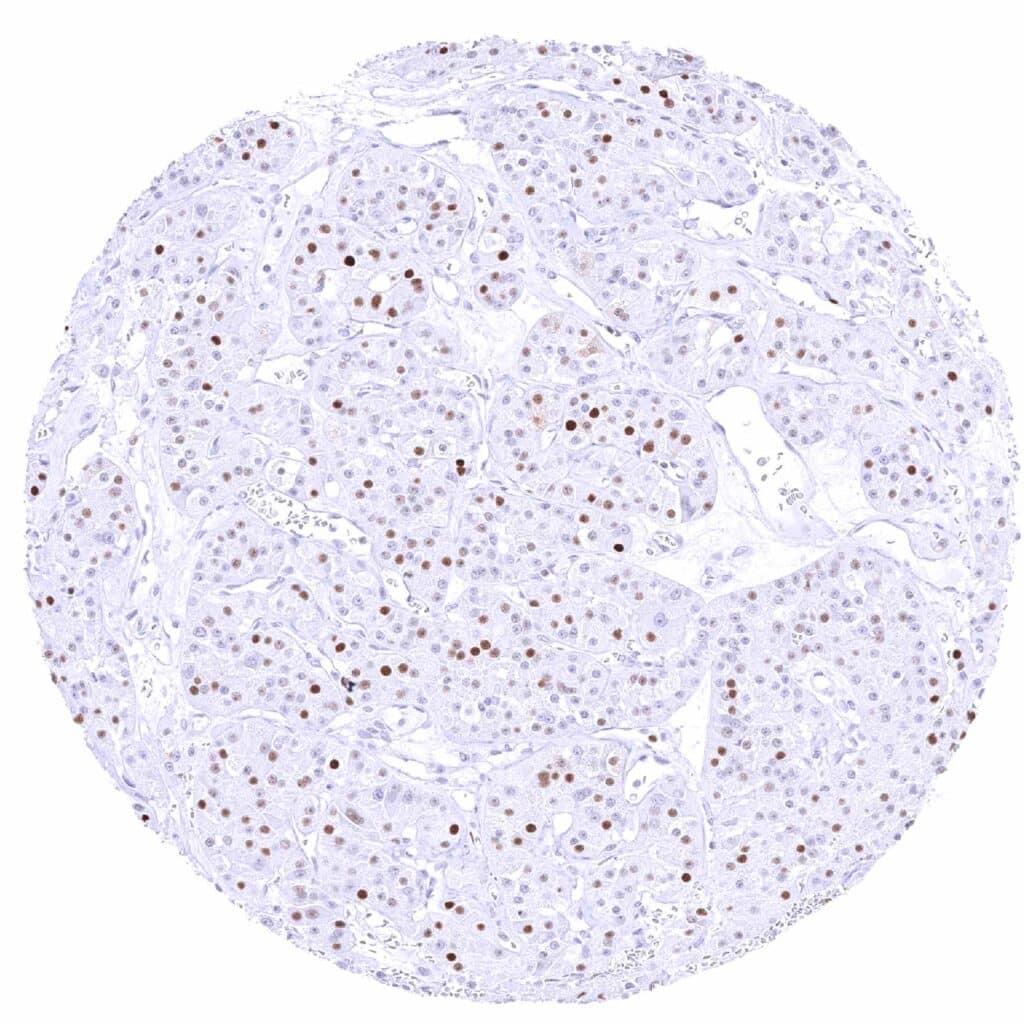
Kidney – Oncocytoma with distinct nuclear MCM5 staining of a large subset of tumor cells. .jpeg
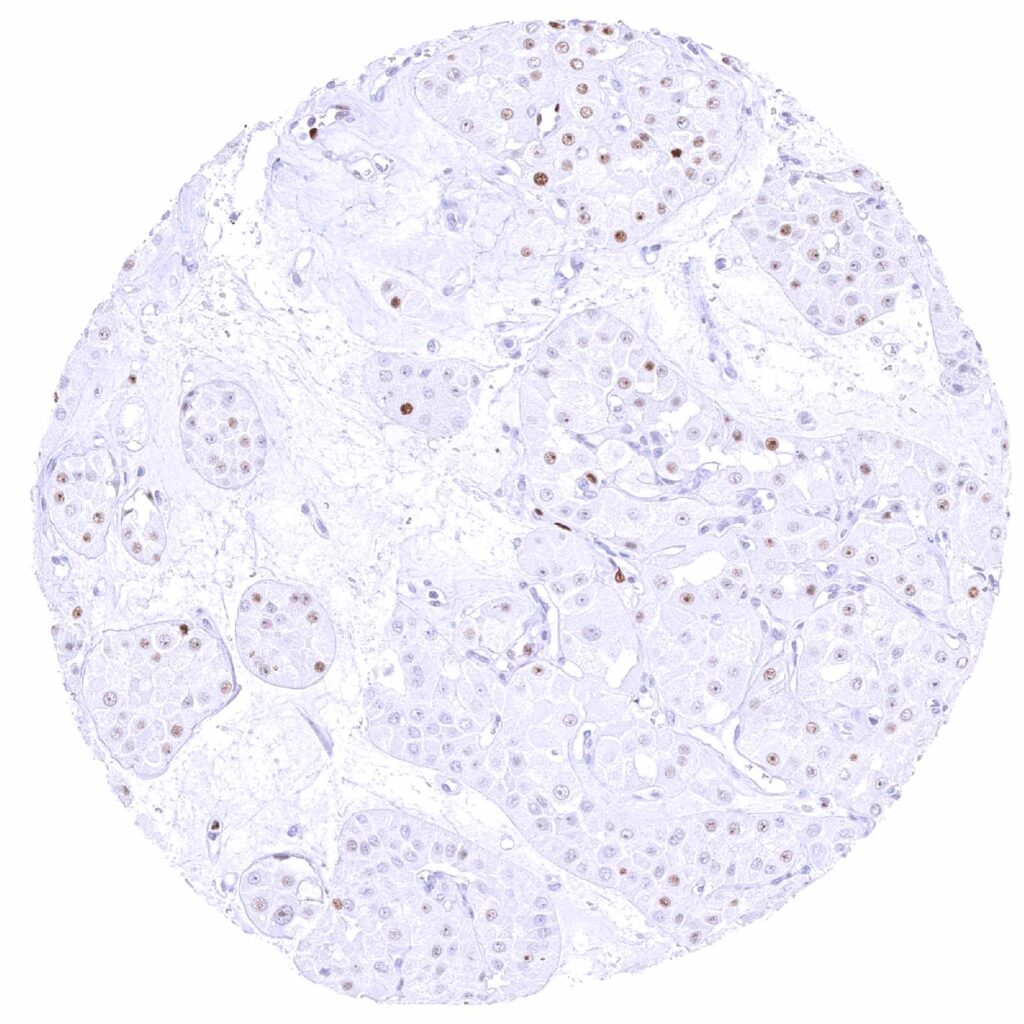
Kidney – Oncocytoma with weak to moderate nuclear MCM5 staining of a fraction of tumor cells.
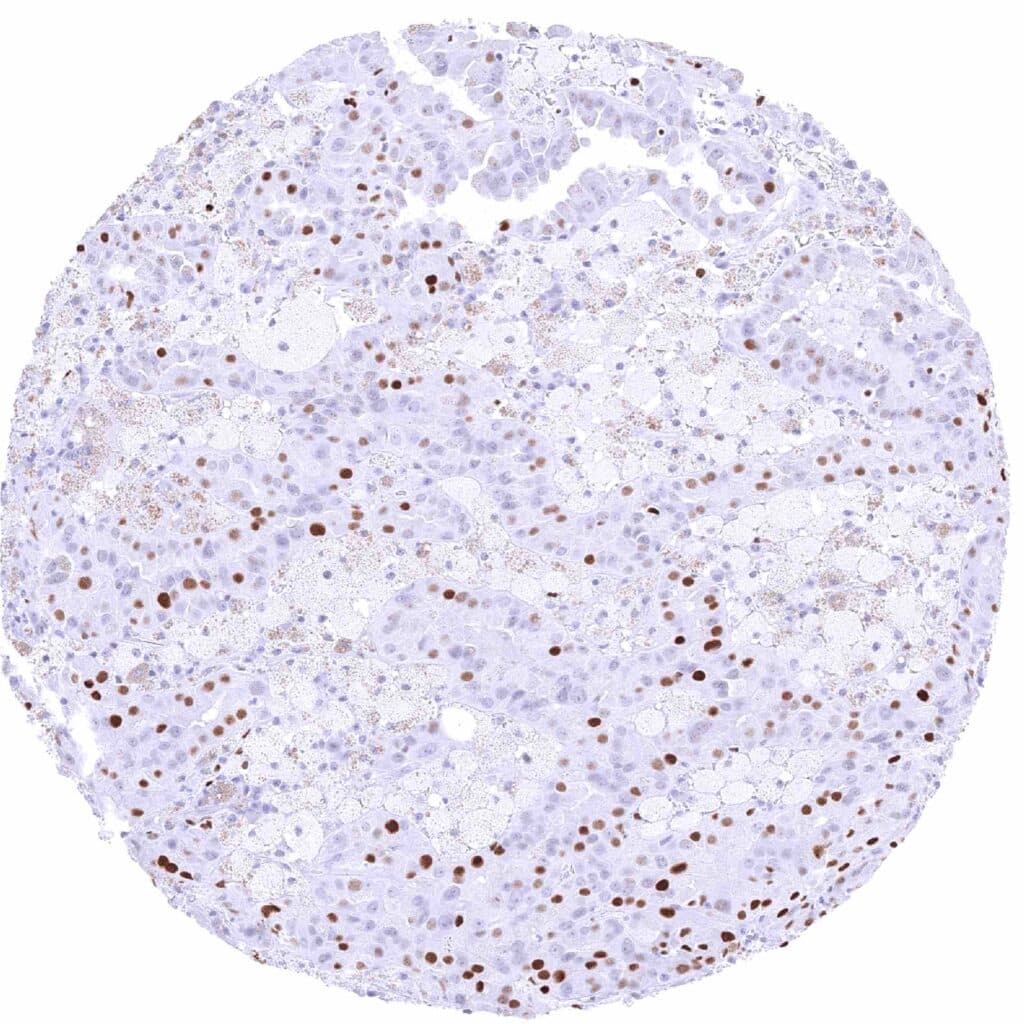
Kidney – Papillary renal cell carcinoma with distinct nuclear MCM5 staining of a fraction of tumor cells.
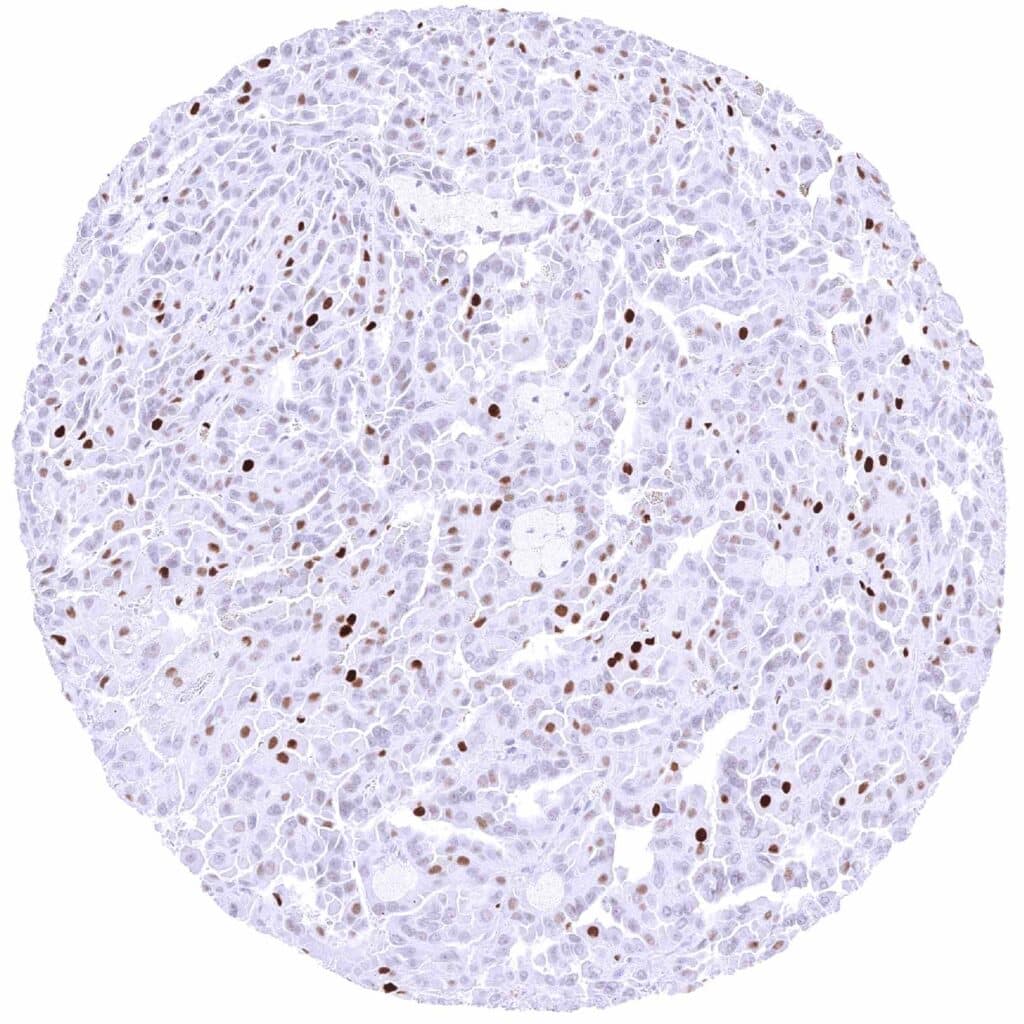
Kidney – Papillary renal cell carcinoma with strong MCM5 staining of a subset of tumor cells. .jpeg
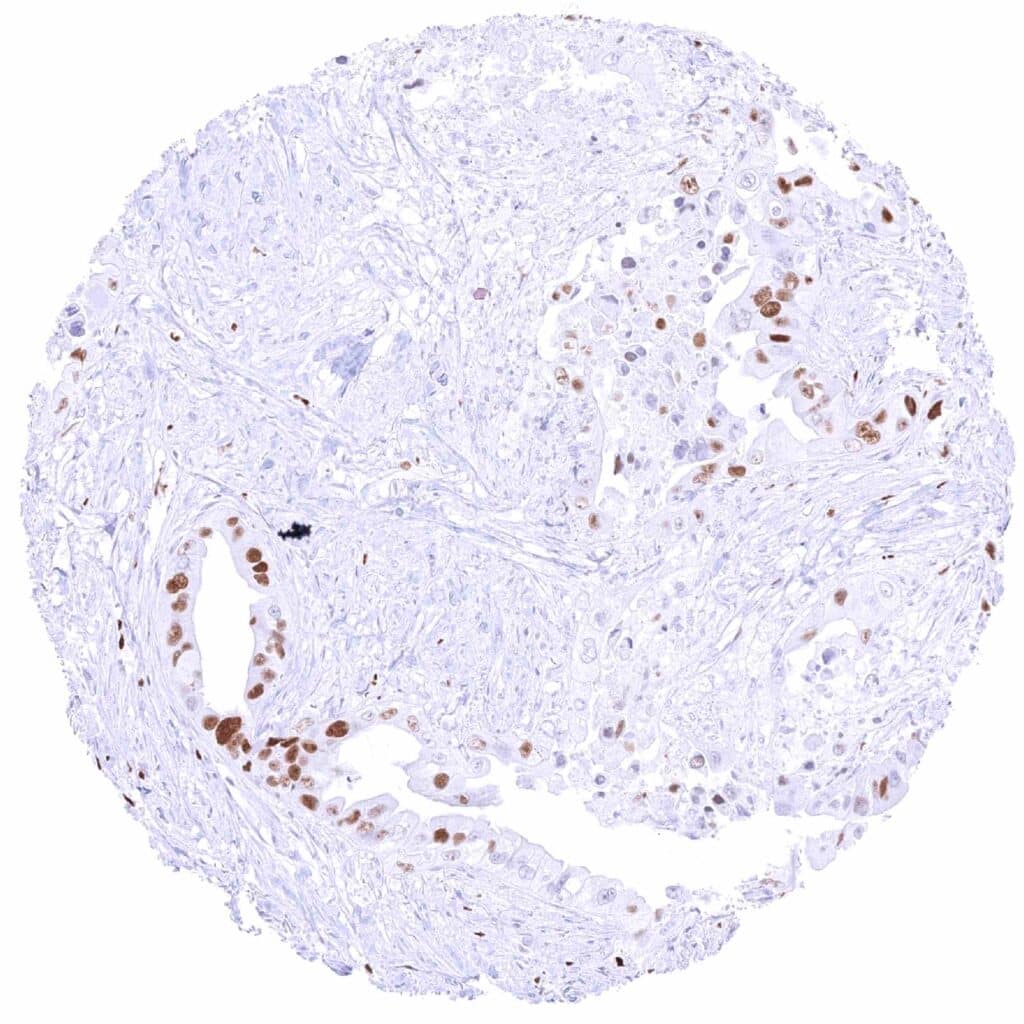
Lung – Adenocarcinoma with strong nuclear MCM5 staining of a fraction of tumor cells. .jpeg
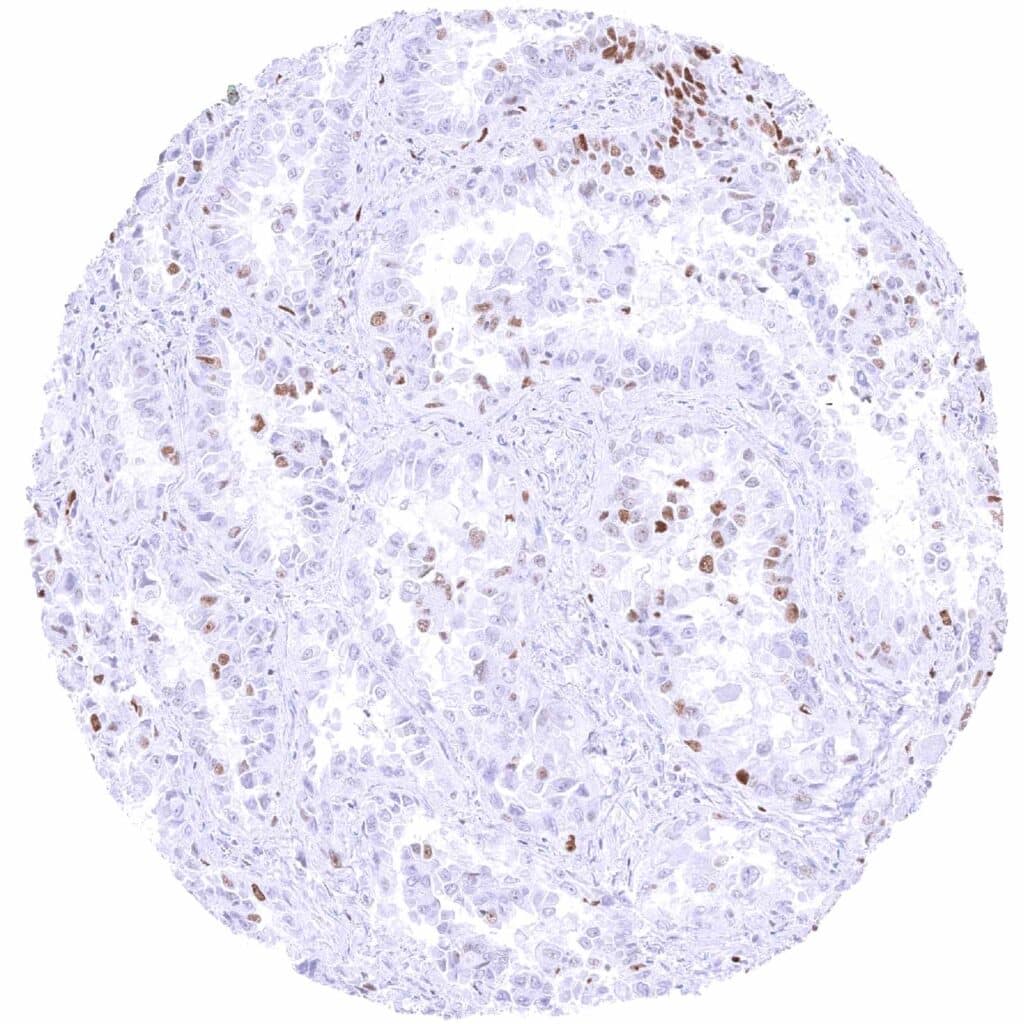
Lung – Adenocarcinoma with weak to moderate MCM5 staining of a subset of tumor cells.
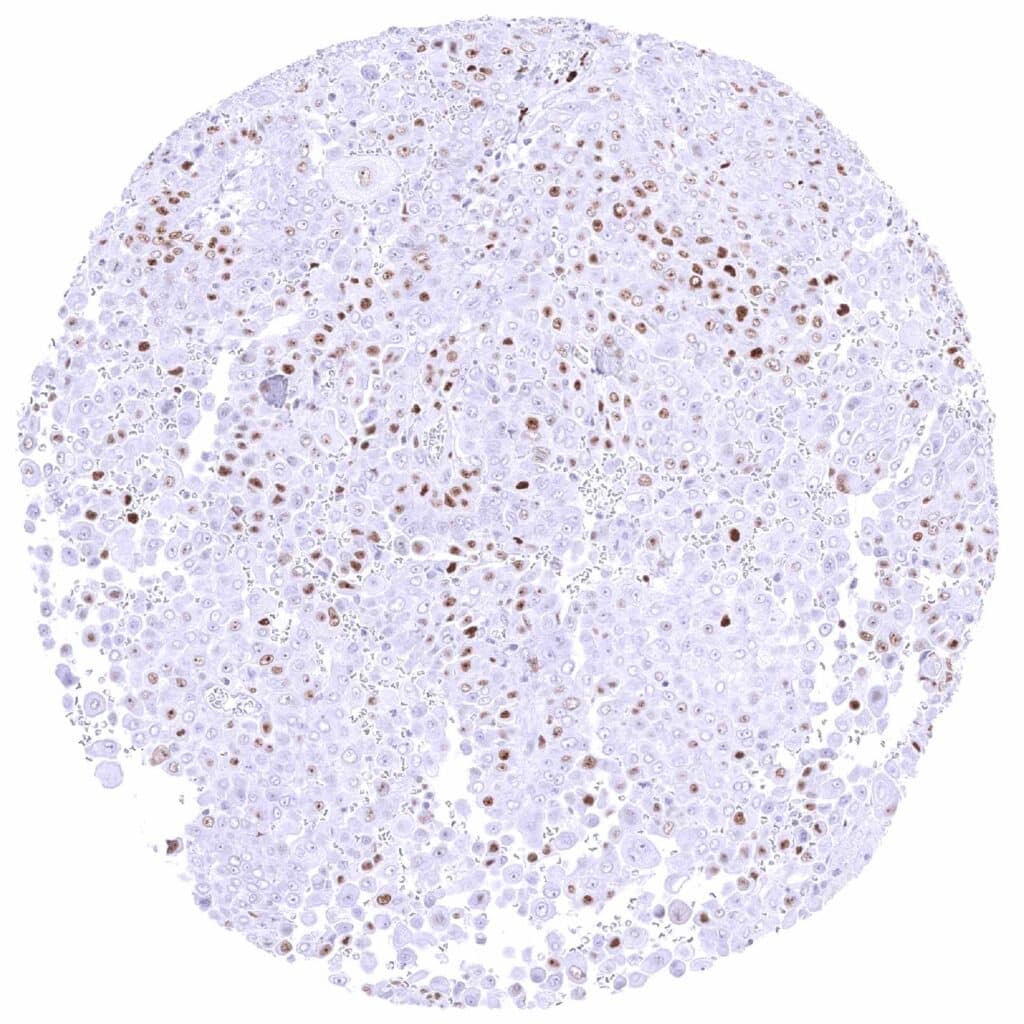
Lung – Malignant mesothelioma with MCM5 positivity of a fraction of a subset of tumor cells.
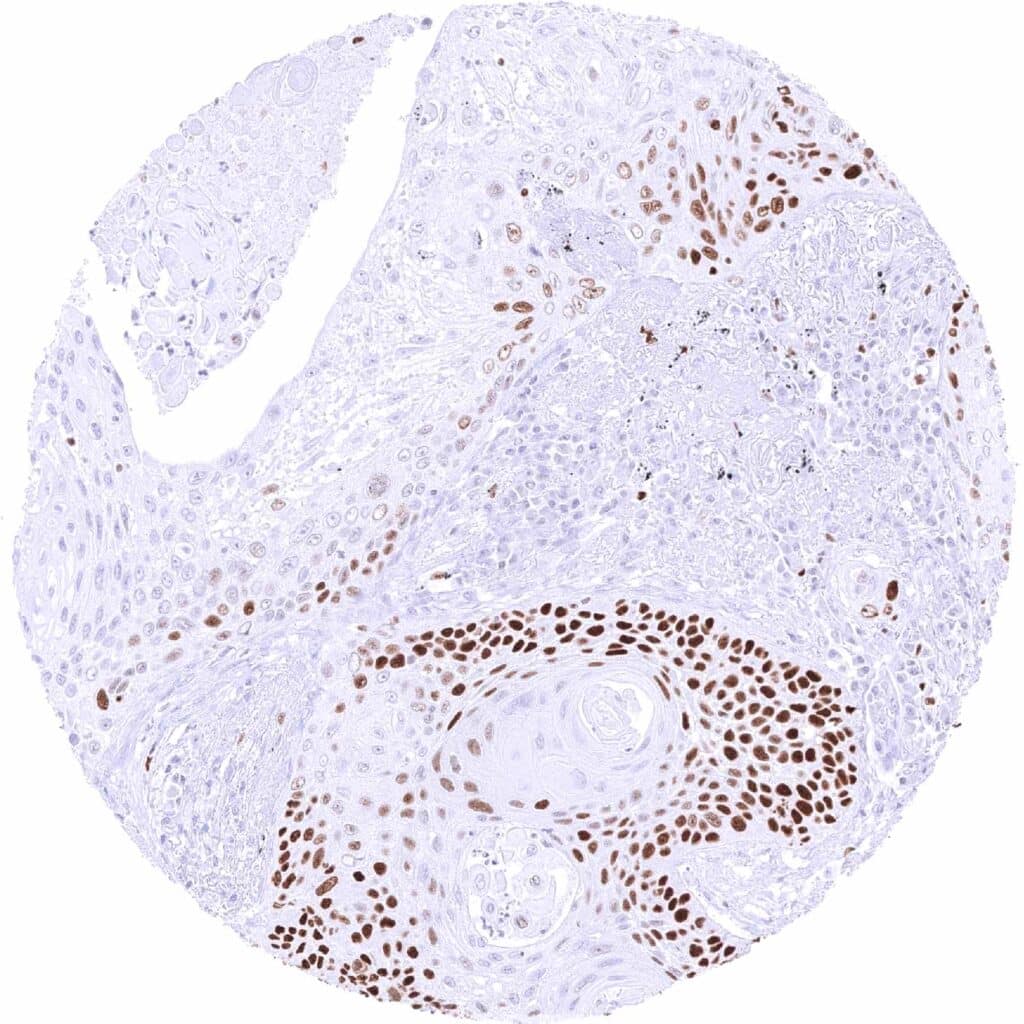
Lung – Squamous cell carcinoma with moderate to strong nuclear MCM5 staining of a significant fraction of tumor cells.
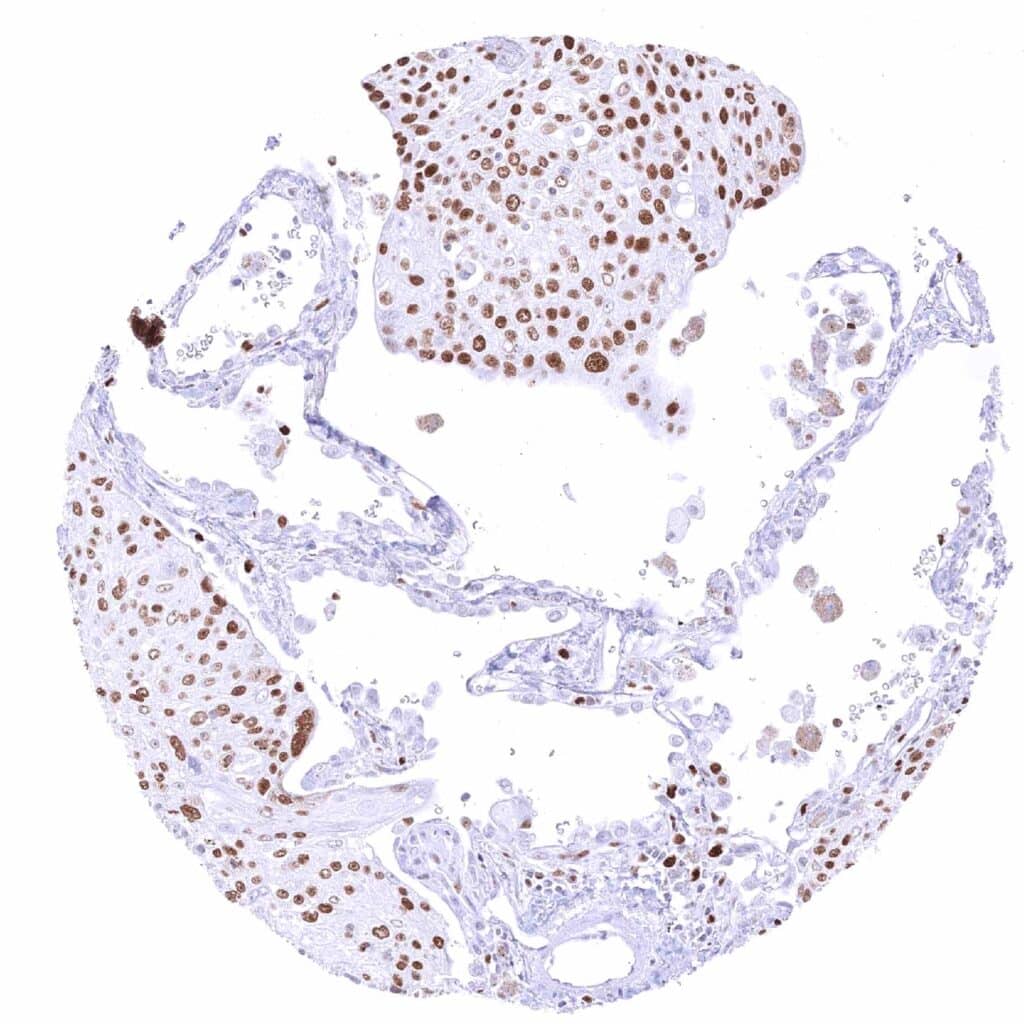
Lung – Squamous cell carcinoma with strong MCM5 staining of a subset of tumor cells. .jpeg
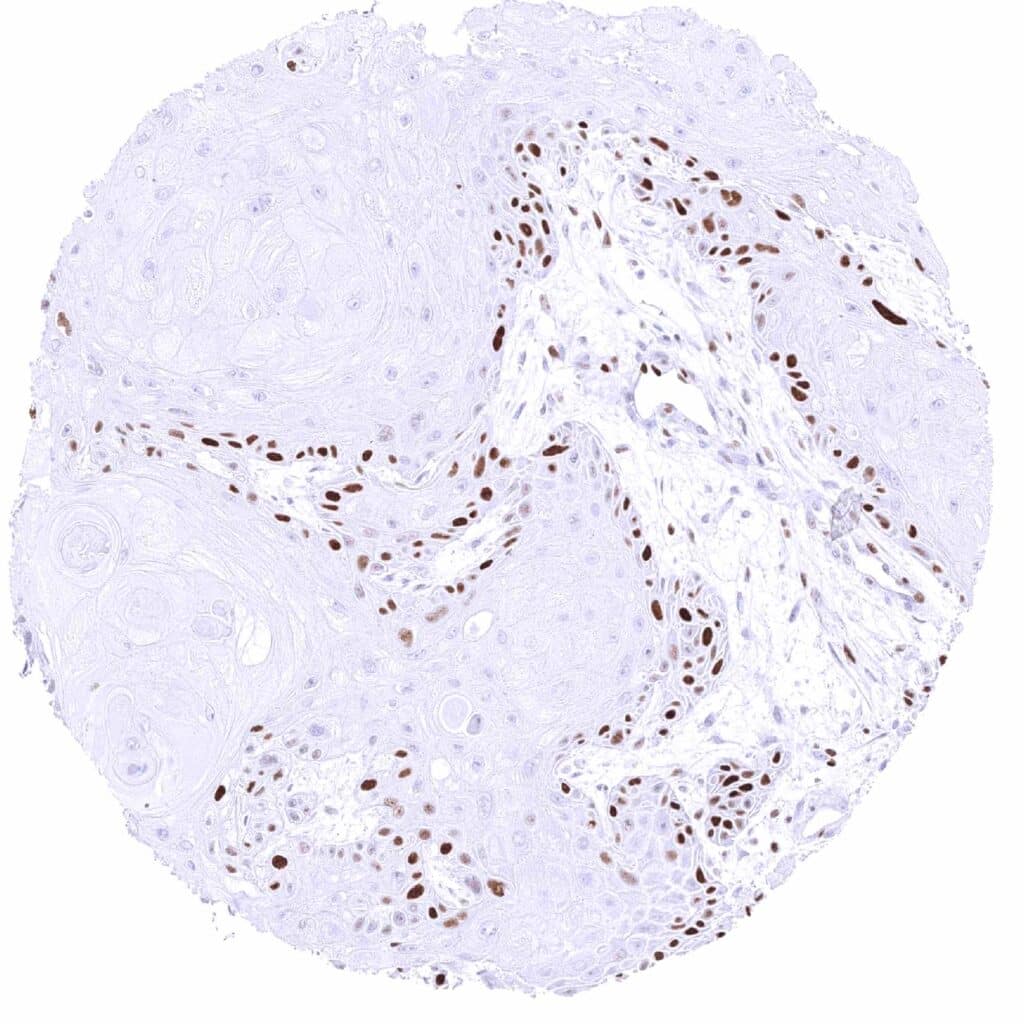
Oral cavity – Squamous cell carcinoma with distinct nucler MCM5 staining of a subset of tumor cells, preferentially at the periphery of tumor cell nests. .jpeg
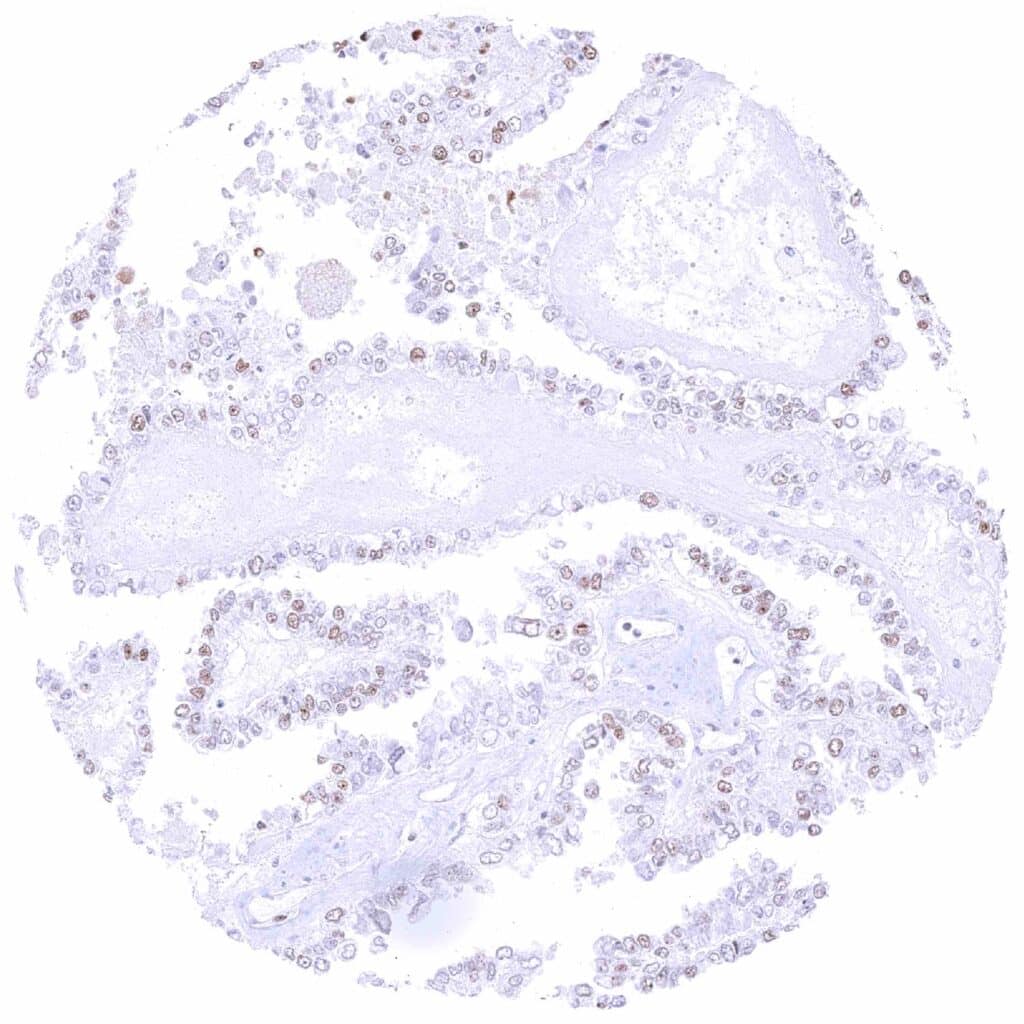
Ovary – Clear cell carcinoma with weak MCM5 staining of a subset of tumor cells.
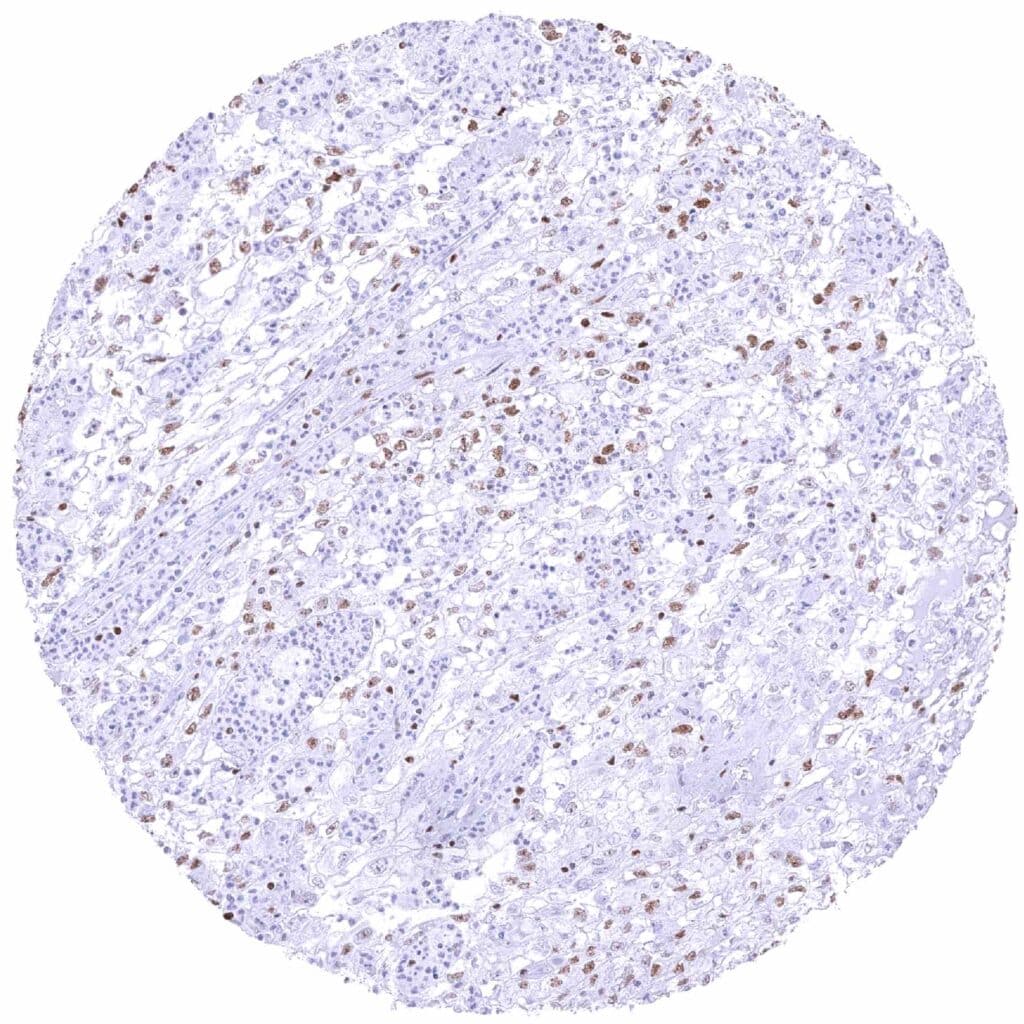
Ovary – Clear cell carcinoma with weak to moderate nuclear MCM5 positivity of a fraction of tumor cells.
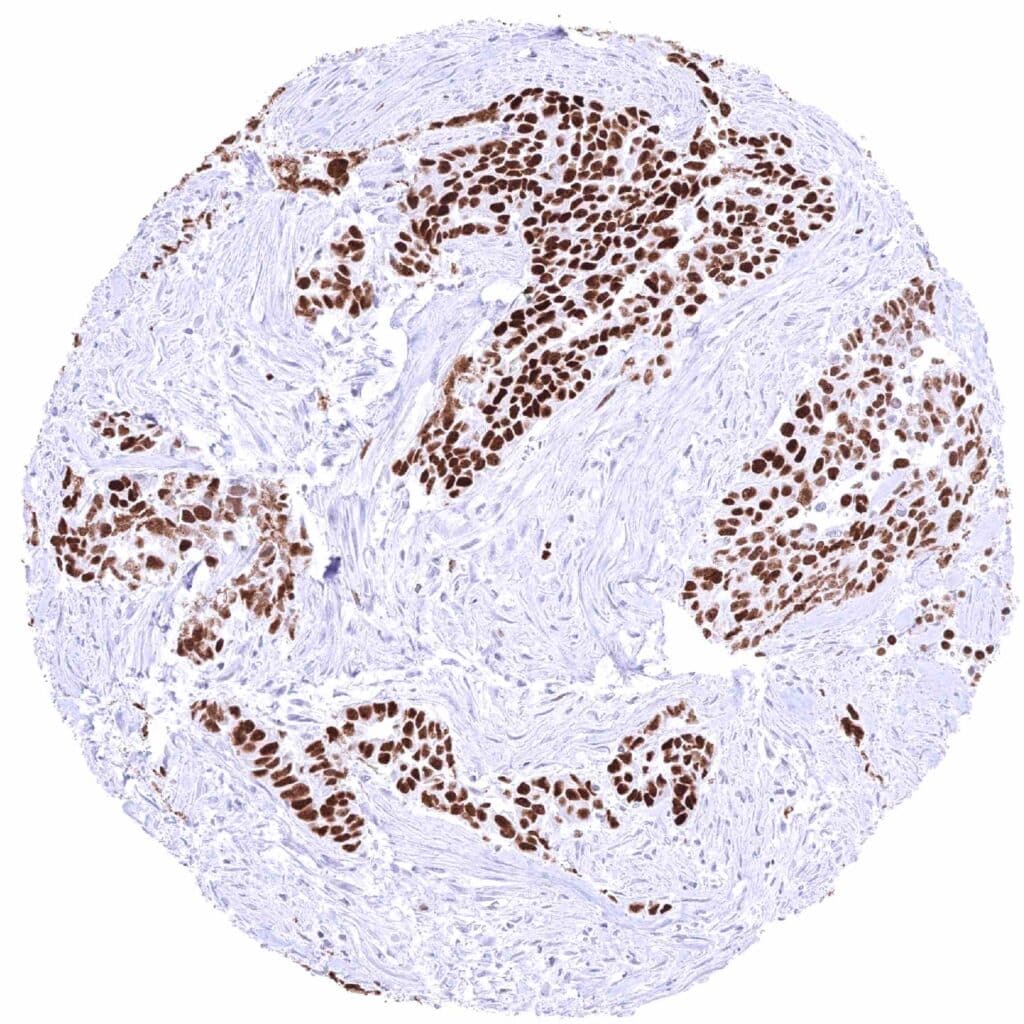
Ovary – Serous high-grade carcinoma with strong nuclear MCM5 staining of _90 of tumor cells.

Ovary – Serous high-grade carcinoma with variable intensity nuclear MCM5 staining of almost all tumor cells.
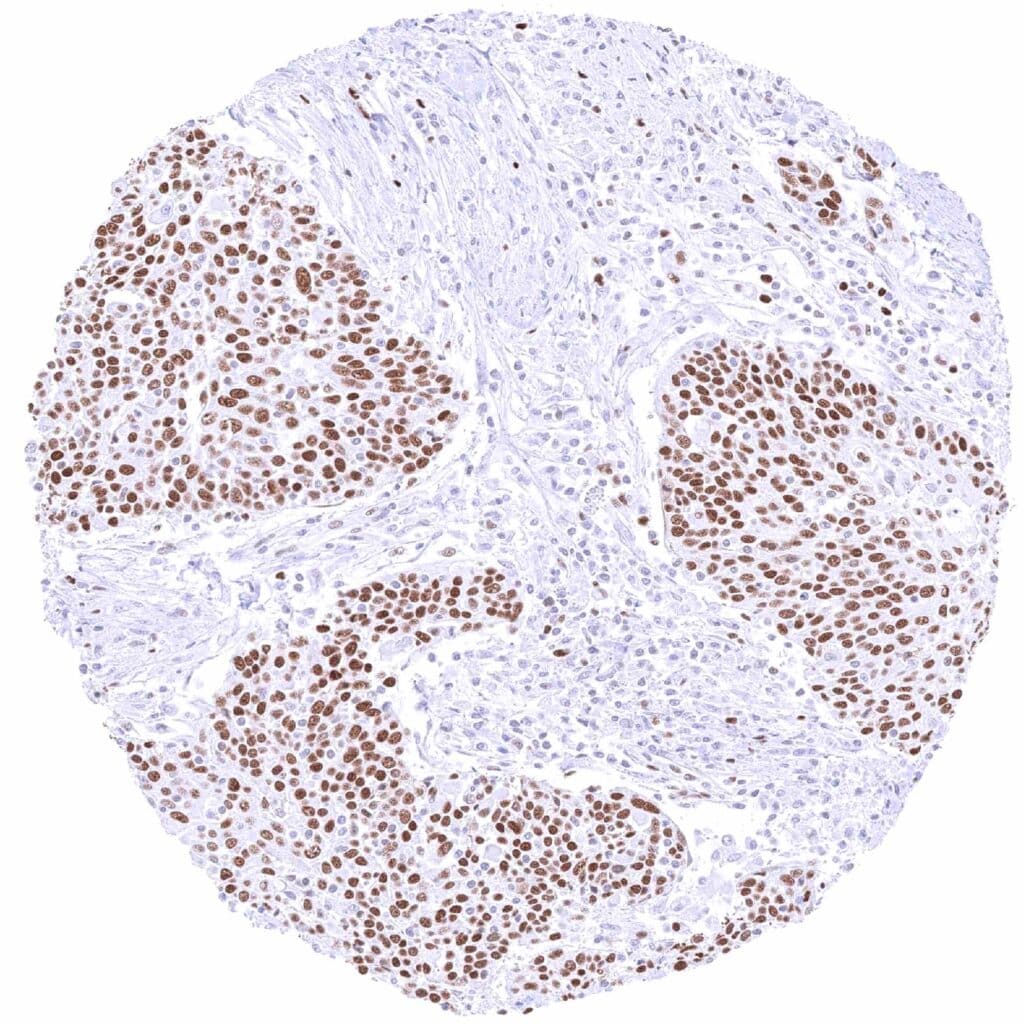
Pharynx – Squamous cell carcinoma with distinct nuclear MCM5 staining of _90_ of tumor cells. .jpeg
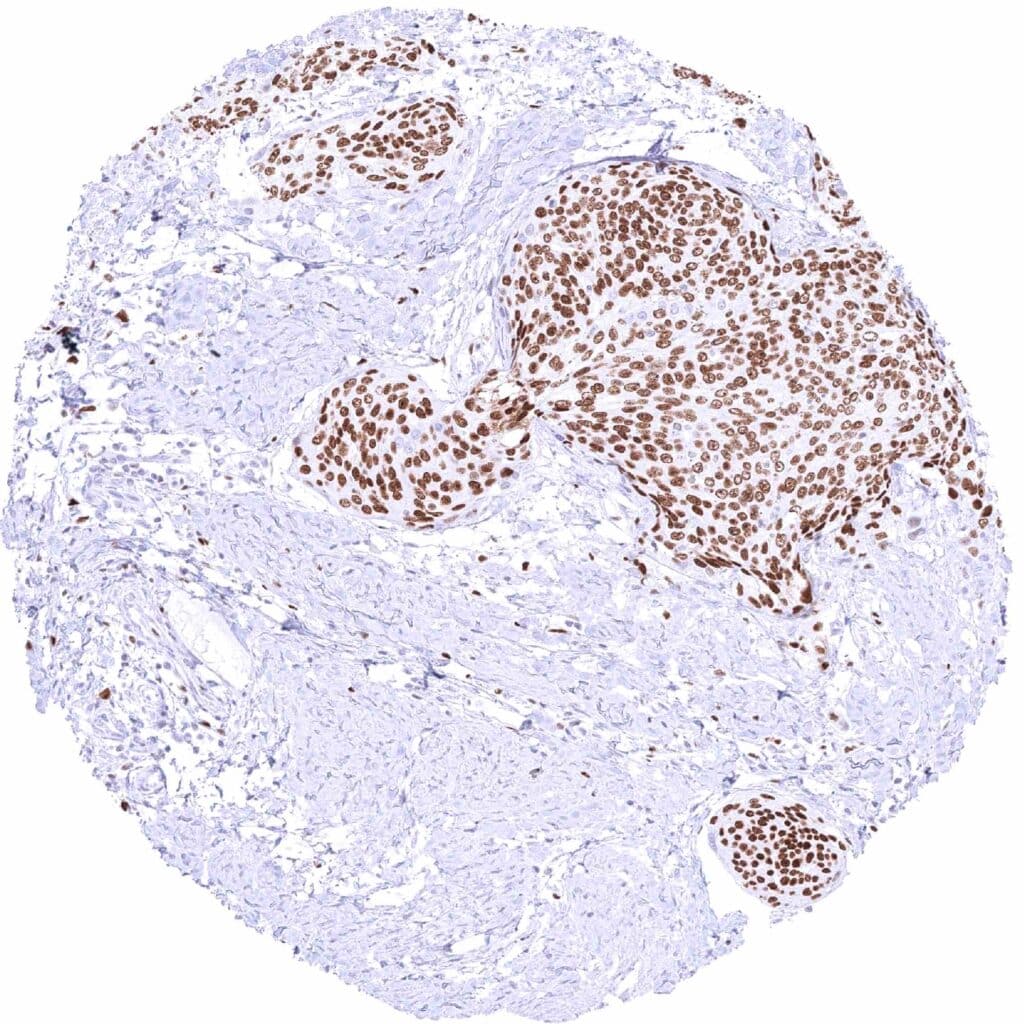
Pharynx – Squamous cell carcinoma with moderate to strong MCM5 positivity of all tumor cells.
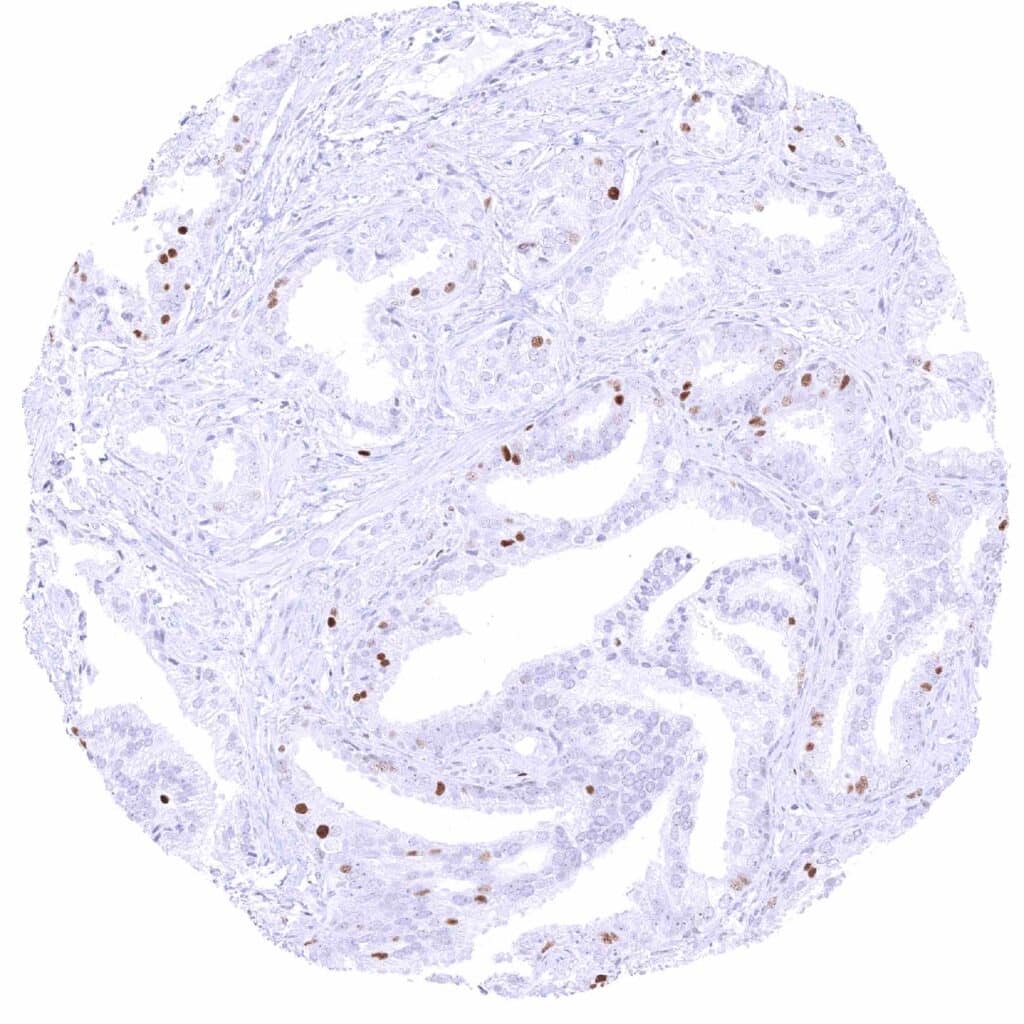
Prostate – Adenocarcinoma (Gleason 3+3=6) with strong MCM5 positivity of a subset of tumor cells.
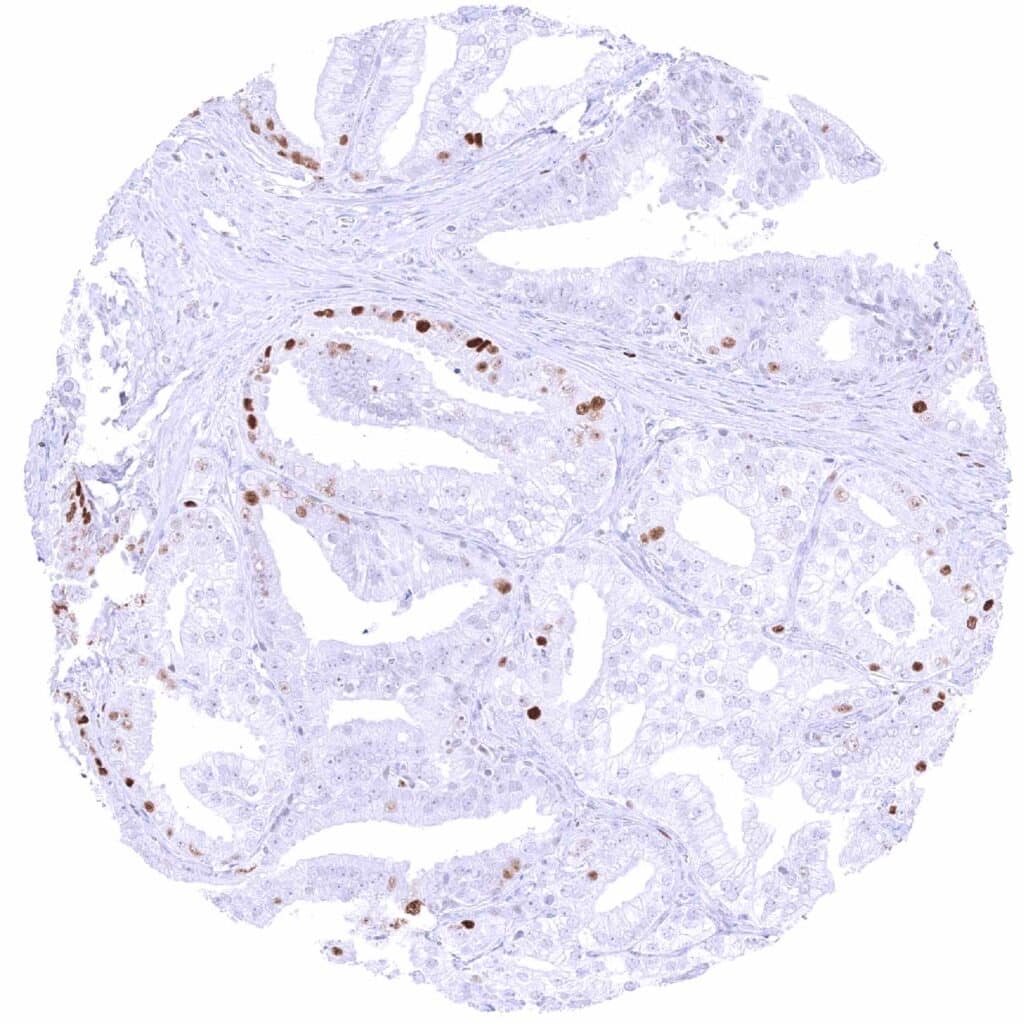
Prostate – Adenocarcinoma (Gleason 3+4=7) with distinct MCM5 staining of a small subset of tumor cells.
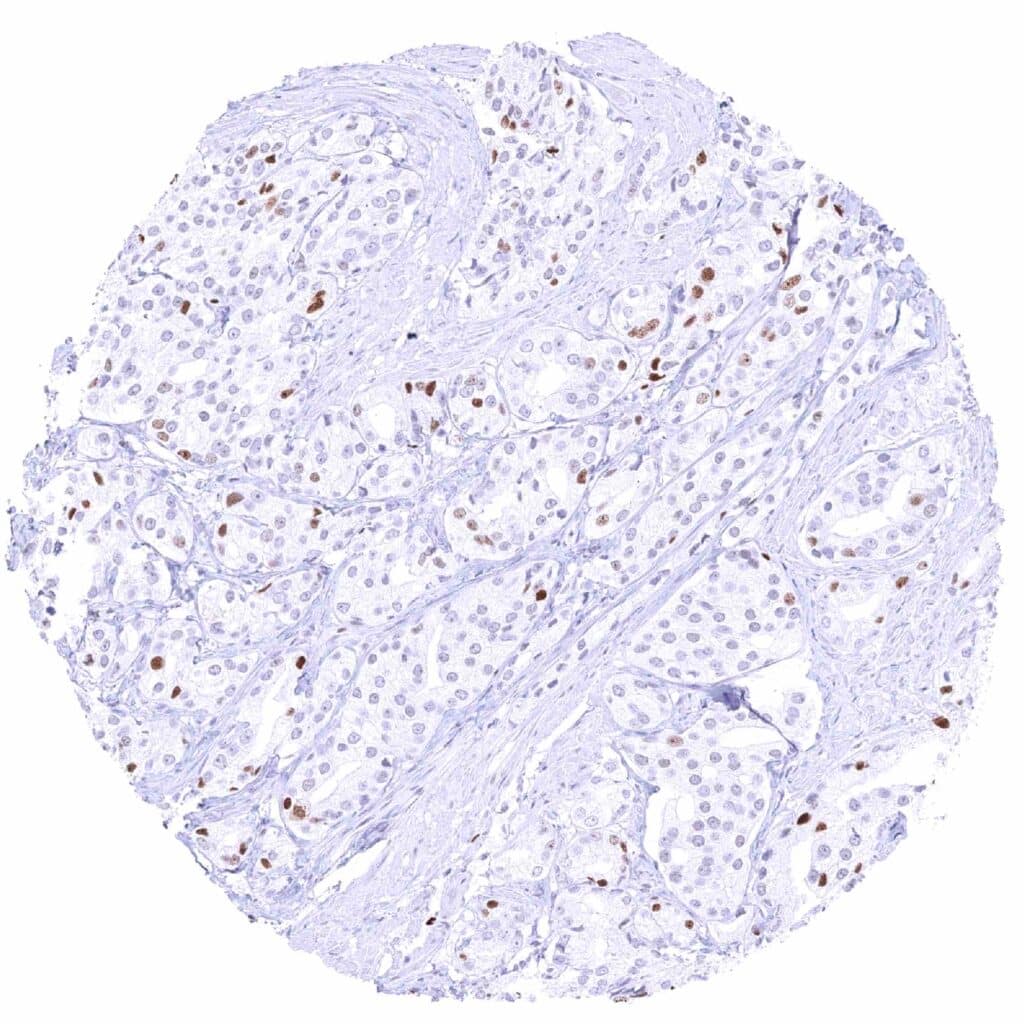
Prostate – Adenocarcinoma (Gleason 9) with distinct nuclear MCM5 postitivity of a subset of tumor cells. .jpeg
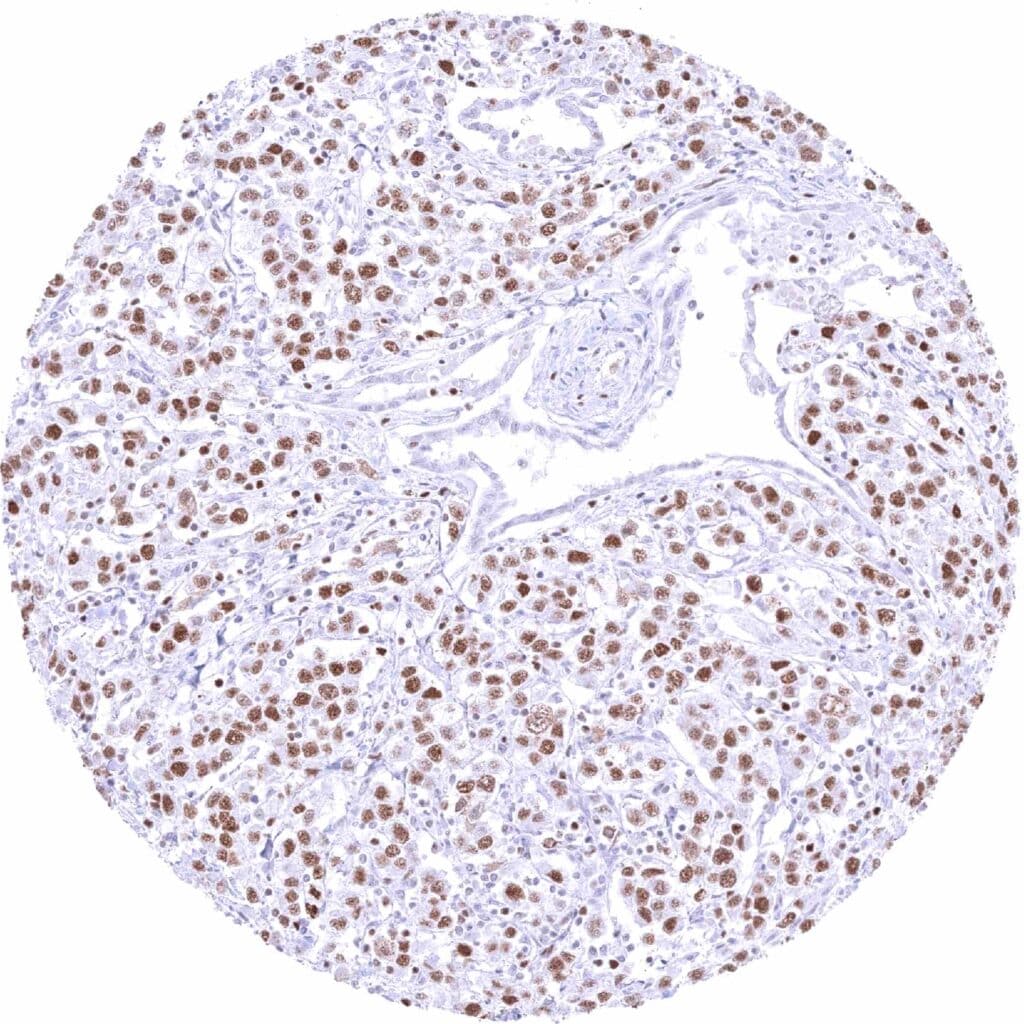
Testis – Seminoma with moderate to strong MCM5 immunostaining of a large subset of tumor cells.
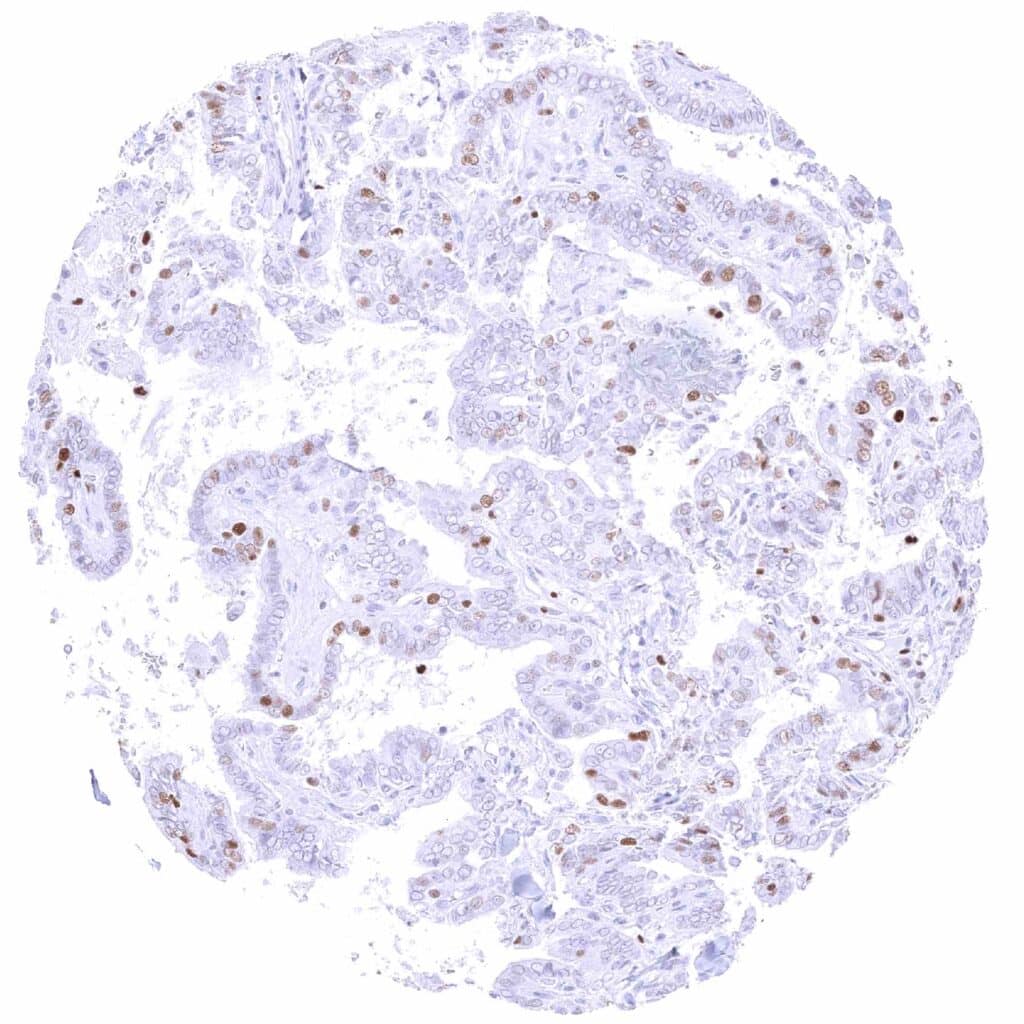
Thyroid – Papillary cancer with weak to moderate nuclear MCM5 staining of a fraction of tumor cells.
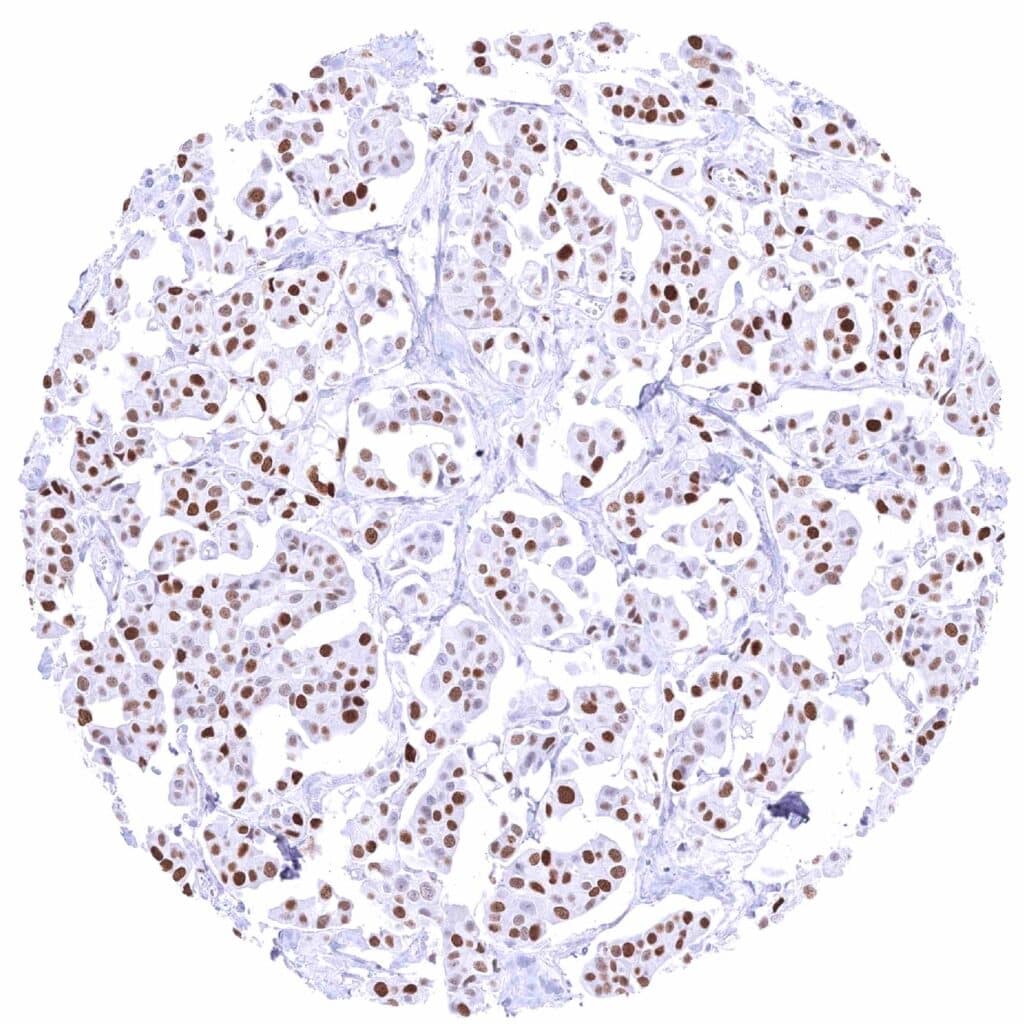
Urinary bladder – Micropapillary muscle-invasive urothelial carcinoma with strong MCM5 positivity of _80_ of tumor cells.
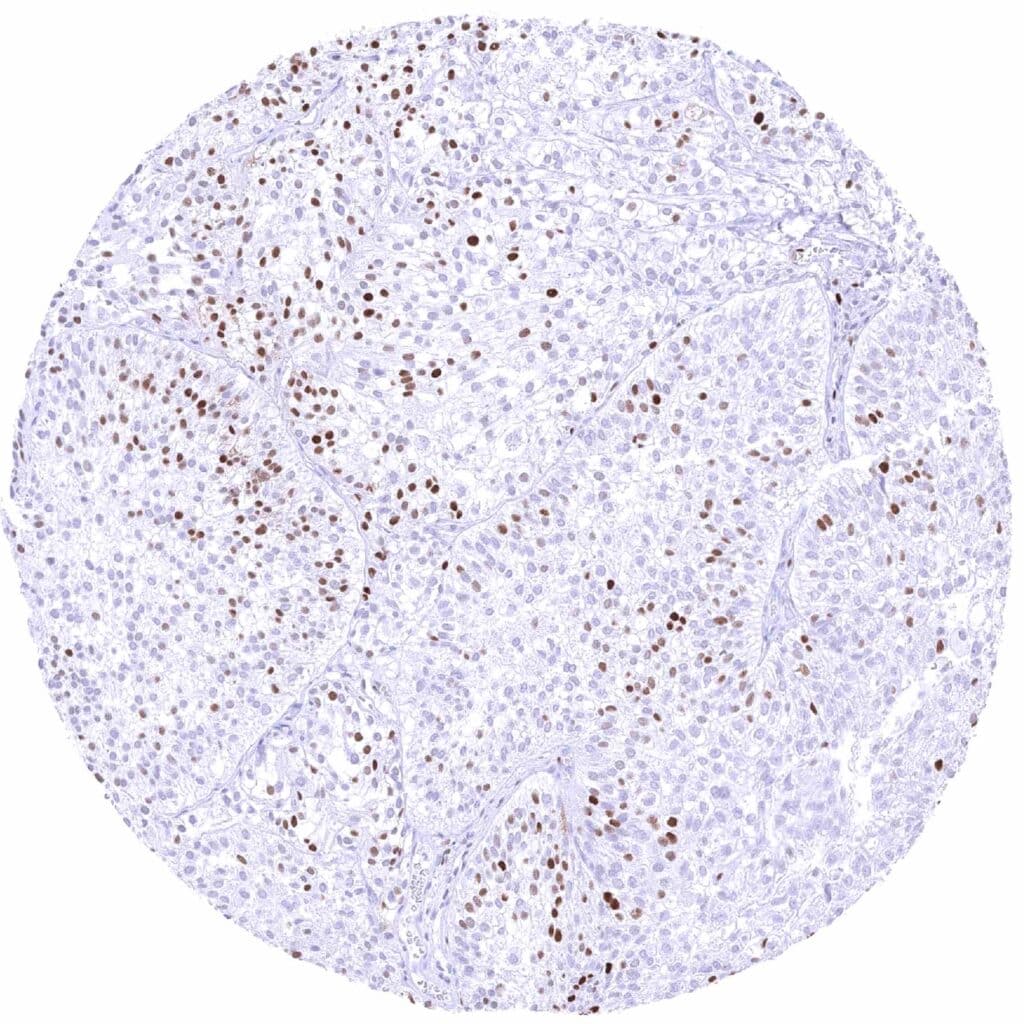
Urinary bladder – Muscle-invasive urothelial carcinoma with strong MCM5 staining of a large subset of tumor cells.
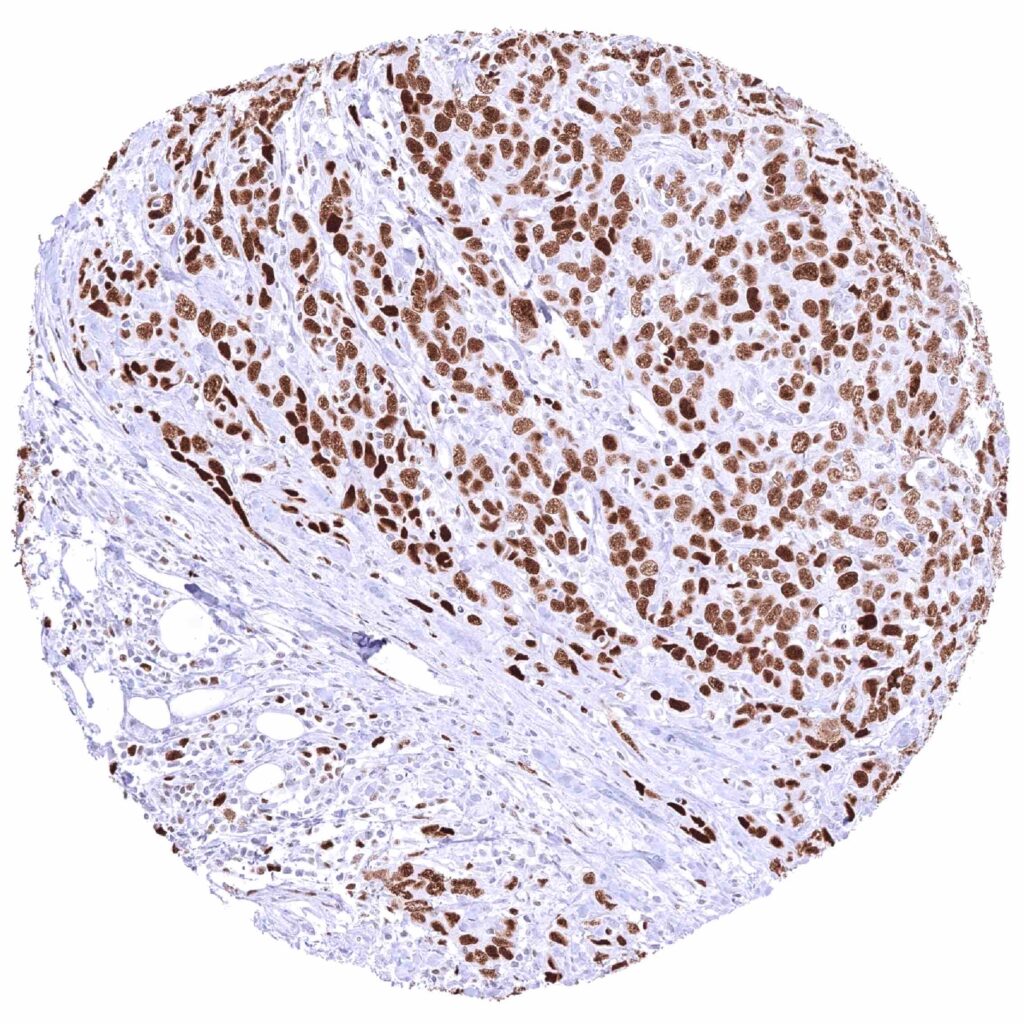
Urinary bladder – Muscle-invasive urothelial carcinoma with strong MCM5 staining of all tumor cells.
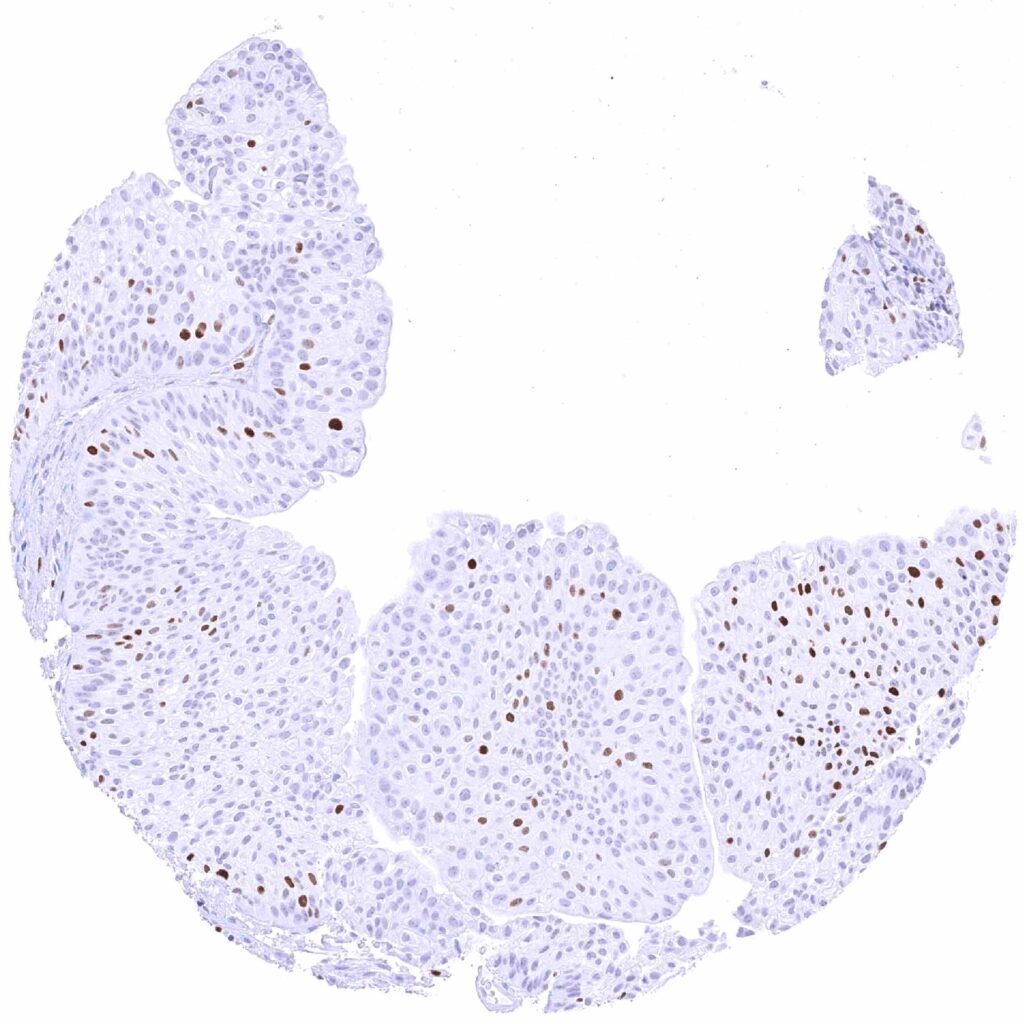
Urinary bladder – Non-invasive urothelial carcinoma (low grade, pTaG2) with distinct MCM5 staining of few tumor cells.
